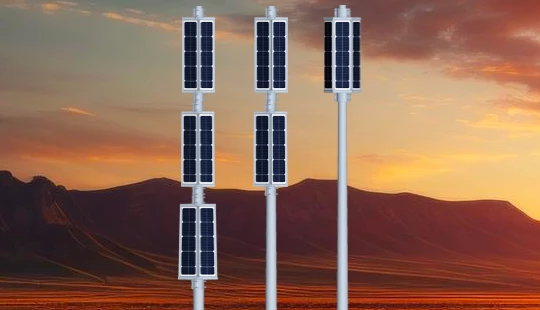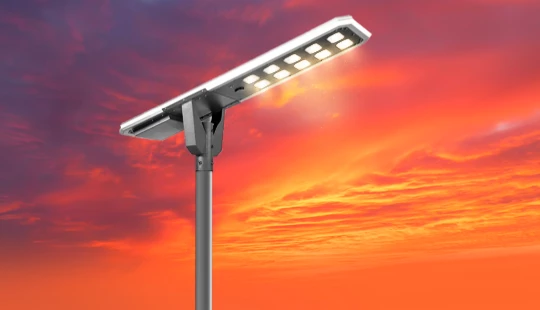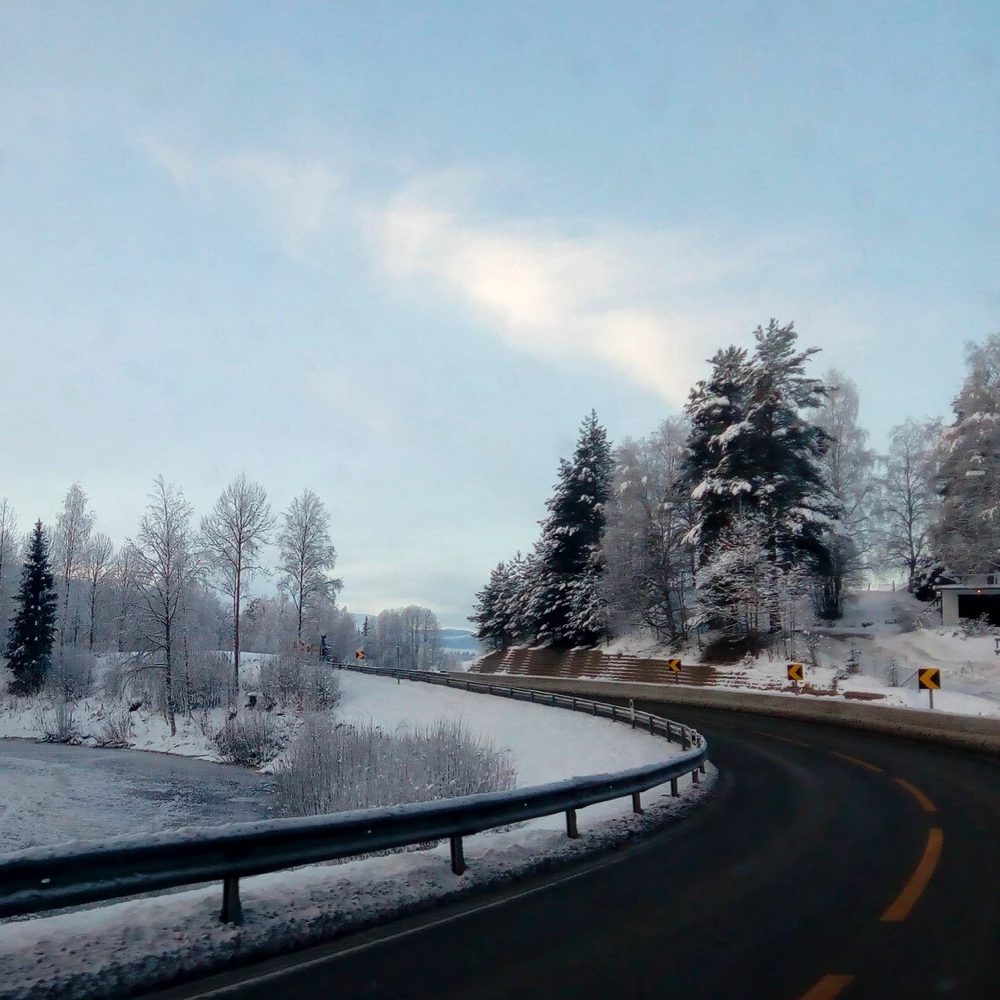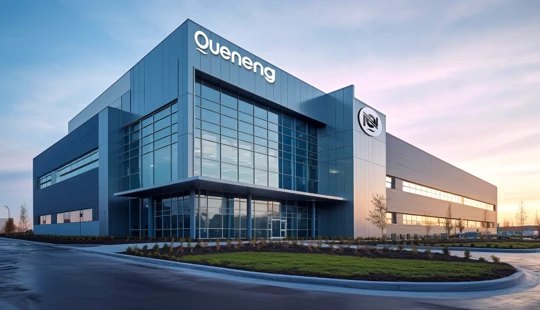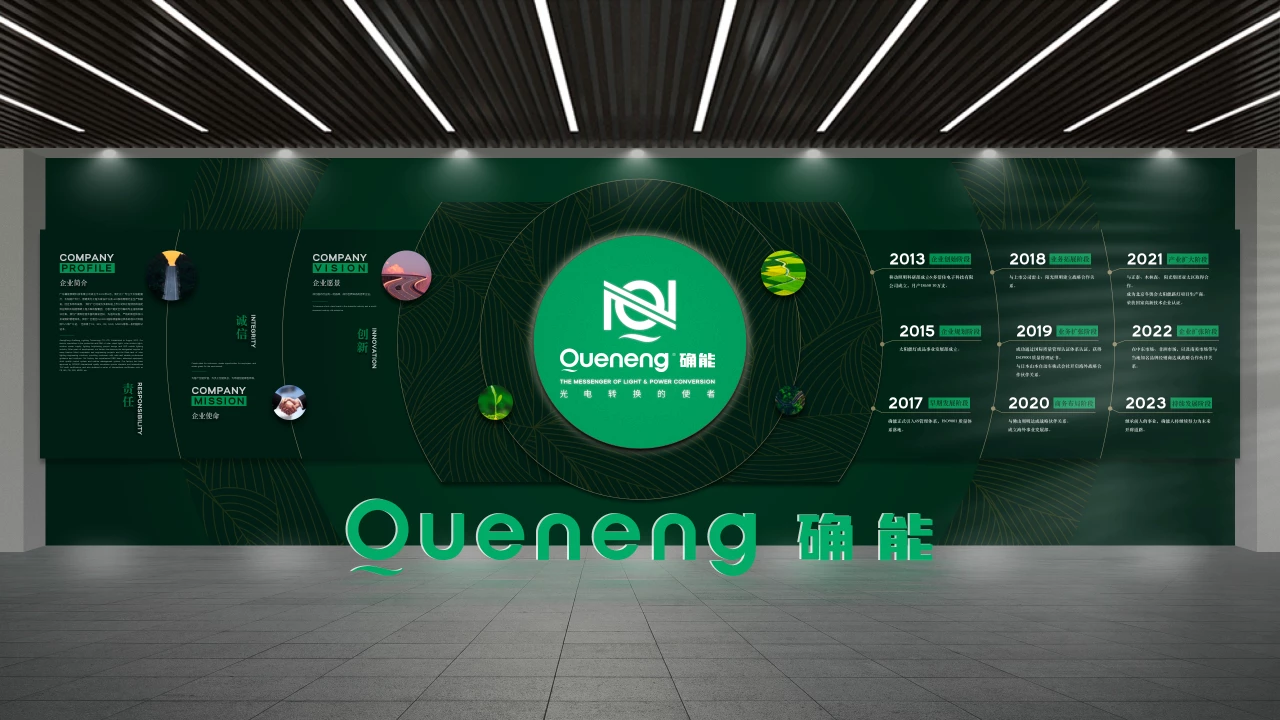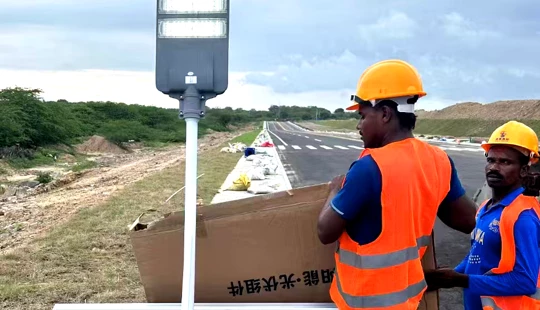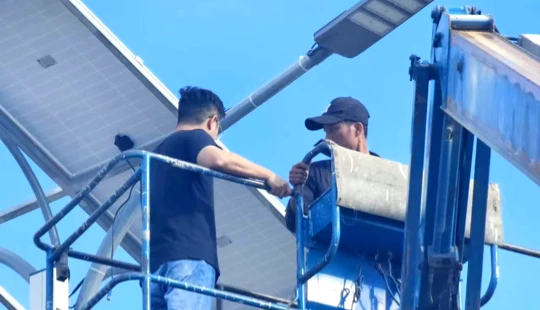Top solar lighting systems for coastal cities in the Philippines | Insights by Quenenglighting
Navigating the Tides: Choosing Top Solar Lighting Systems for Philippine Coastal Cities
The Philippines, with its extensive coastline and exposure to frequent typhoons, presents a formidable challenge for outdoor infrastructure, especially lighting. Traditional grid-powered lights incur high installation and operational costs, are prone to outages during severe weather, and contribute to carbon emissions. Solar lighting systems offer a sustainable and resilient alternative, but selecting the right ones for coastal cities like those in the Philippines requires a deep understanding of environmental stressors and cutting-edge technology. When considering a bulk purchase, what are the most critical factors and common questions users have?
How do coastal conditions impact solar lighting systems, and what materials offer the best protection?
Coastal environments are defined by high humidity, salt-laden air, and frequent exposure to saltwater spray, all of which accelerate corrosion. Standard metals can quickly degrade, compromising the structural integrity and performance of lighting systems. For solar lights, this means accelerated rusting of poles, brackets, and even the internal components if not properly sealed.
To combat this, the best solar lighting systems for coastal applications utilize materials designed for marine environments:
- Marine-Grade Aluminum Alloys: These alloys (e.g., 6063 or 6061) with specialized powder coatings provide excellent resistance to salt spray corrosion and maintain structural integrity.
- Hot-Dip Galvanized Steel: For poles and larger structures, hot-dip galvanization creates a durable zinc coating that acts as a sacrificial layer, protecting the steel underneath from rust.
- Stainless Steel Fasteners and Hardware: All nuts, bolts, and small components should be made from marine-grade stainless steel (e.g., 316L) to prevent rusting and ensure long-term assembly integrity.
- High IP Ratings: Ingress Protection (IP) ratings are crucial. For coastal areas, a minimum of IP66 or IP67 for the entire luminaire, battery compartment, and control unit is essential. IP66 protects against powerful water jets and dust, while IP67 allows for temporary immersion, offering superior protection against heavy rain and even brief flooding.
What features ensure solar lights withstand typhoons and heavy rainfall common in the Philippines?
The Philippines experiences an average of 20 tropical cyclones per year, with about 9-10 making landfall, according to PAGASA data. This necessitates lighting systems built to endure extreme wind loads and torrential rain.
- Robust Pole and Mounting Design: Poles must be engineered to withstand significant wind speeds, often rated for up to 160-200 km/h (Category 3-4 typhoon winds). This involves thicker gauge steel or aluminum, appropriate pole heights, and secure foundation designs. Tapered or polygonal pole designs can also reduce wind resistance.
- Integrated Design: Systems where the solar panel, battery, and LED fixture are integrated into a compact, aerodynamic unit tend to be more wind-resistant than those with separate, bulky components.
- Superior Sealing: Beyond the IP rating, robust silicone gaskets and sealed cable entries prevent water ingress, which is a common failure point during heavy downpours.
- Durable Solar Panels: Solar panels should be framed with strong aluminum, and the glass (tempered glass) should be highly impact-resistant to withstand hailstones or debris carried by strong winds.
What are the key technical specifications for optimal and consistent lighting performance?
Reliable and consistent illumination, especially during extended cloudy periods or nights, hinges on the right internal components:
- Battery Technology (LiFePO4): Lithium Iron Phosphate (LiFePO4) batteries are the industry standard for high-performance solar lighting. They offer:
- Longer Cycle Life: Typically 2,000 to 4,000 discharge cycles, significantly outperforming lead-acid batteries (300-1000 cycles). This translates to 5-10 years of service life or more.
- Temperature Stability: Better performance and safety in the Philippines' warm climate.
- Depth of Discharge (DoD): Can be safely discharged up to 80-90% without significant damage, maximizing usable capacity.
- Solar Panel Efficiency (Monocrystalline): Monocrystalline silicon solar panels are more efficient (typically 17-22% conversion efficiency) than polycrystalline panels, meaning they can generate more power from a smaller footprint, crucial for compact integrated designs and faster charging.
- Charge Controller (MPPT): A Maximum Power Point Tracking (MPPT) charge controller is superior to PWM (Pulse Width Modulation). MPPT controllers can increase charging efficiency by 15-30% by continually tracking the solar panel's maximum power output point, especially valuable during fluctuating sunlight conditions common in the tropics.
- LED Luminaire Efficiency: High-quality LEDs offer high lumen output per watt (e.g., 150-180 lm/W) and a long lifespan (50,000 to 100,000 hours), reducing energy consumption and replacement frequency. Look for good light distribution patterns suitable for streets or public areas.
How can we ensure long-term, low-maintenance operation for solar lighting systems?
Minimizing maintenance is crucial for municipal and large-scale projects, especially in remote or hard-to-reach coastal areas. The initial investment in quality components directly impacts long-term maintenance costs.
- High-Quality Components: As detailed above, using durable materials (marine-grade aluminum, stainless steel) and robust internal components (LiFePO4, MPPT) significantly reduces the likelihood of failures.
- Self-Cleaning Features: Some advanced solar panel designs feature coatings or slight angles that promote water runoff, helping to wash away dust and salt buildup, thereby maintaining optimal charging efficiency.
- Modular Design: Systems with modular components allow for easier and faster replacement of individual parts (e.g., battery pack, LED module, controller) rather than requiring the replacement of the entire unit.
- Smart Monitoring Systems: Advanced systems can offer remote monitoring capabilities, allowing for real-time diagnostics of battery status, panel performance, and light operation, enabling proactive maintenance rather than reactive repairs.
- Comprehensive Warranty: A strong warranty (e.g., 5 years for the entire system, 10-25 years for solar panels) indicates the manufacturer's confidence in product longevity and provides peace of mind.
What is the overall cost-benefit of investing in high-quality solar lighting for coastal areas?
While the upfront cost of high-quality solar lighting systems designed for coastal environments might be higher than conventional lighting or lower-grade solar options, the long-term benefits and Return on Investment (ROI) are substantial.
- Elimination of Electricity Bills: The most significant saving comes from zero electricity consumption. This provides predictable operational costs, immune to rising utility rates.
- Reduced Installation Costs: No trenching, cabling, or connection to the grid is required, significantly lowering initial civil works and labor costs, particularly in challenging coastal terrains.
- Lower Maintenance Over Time: As discussed, durable systems require less frequent repair and replacement, leading to lower lifetime maintenance expenses.
- Enhanced Resilience: Solar lights operate independently, providing reliable illumination even during grid outages caused by typhoons or other natural disasters, critical for public safety and emergency services in the Philippines.
- Environmental Benefits: Reduced carbon footprint aligns with sustainability goals and can qualify for various green initiatives or funding.
- Long-Term Value: A well-designed system can last 10-15 years or more, with batteries typically requiring replacement only after 5-7 years, ensuring a long payback period and continued savings. The long-term savings from avoided energy costs and reduced maintenance often outweigh the initial investment within 3-5 years, depending on energy prices and specific project parameters.
Quenenglighting: Your Partner for Resilient Coastal Illumination
Quenenglighting understands the unique demands of coastal environments. Our solar lighting systems are engineered with a focus on durability, performance, and reliability, making them ideal for the Philippines' challenging climate. We utilize marine-grade aluminum, hot-dip galvanized poles, and offer IP66/IP67 rated enclosures to ensure maximum corrosion and water resistance. Our systems incorporate high-efficiency monocrystalline solar panels, advanced MPPT charge controllers, and long-lasting LiFePO4 batteries, guaranteeing consistent illumination and extended operational life even through prolonged cloudy periods. Quenenglighting products are designed for easy installation and minimal maintenance, backed by comprehensive warranties, providing a superior long-term lighting solution that ensures safety, sustainability, and significant cost savings for your coastal cities.

Have more questions about our products or services?
The latest hot news you might like

Discover how solar panels power street lights, exploring the technology behind solar energy conversion, storage systems, and how solar-powered street lights are revolutionizing urban and rural lighting solutions.

Learn how AC Solar Hybrid Street Lights work, their advantages, disadvantages, system behavior in low-sunlight conditions, and why hybrid technology is ideal for regions with unstable sunlight.

Municipalities around the world are increasingly adopting solar-powered streetlights as part of their urban development strategies. Rising energy costs, the need for sustainable infrastructure, and government green initiatives are driving cities to switch from traditional street lighting to advanced LED solar streetlights.
Queneng Lighting provides municipalities with cost-effective, energy-efficient, and durable solar lighting solutions, ensuring safe and sustainable public spaces.
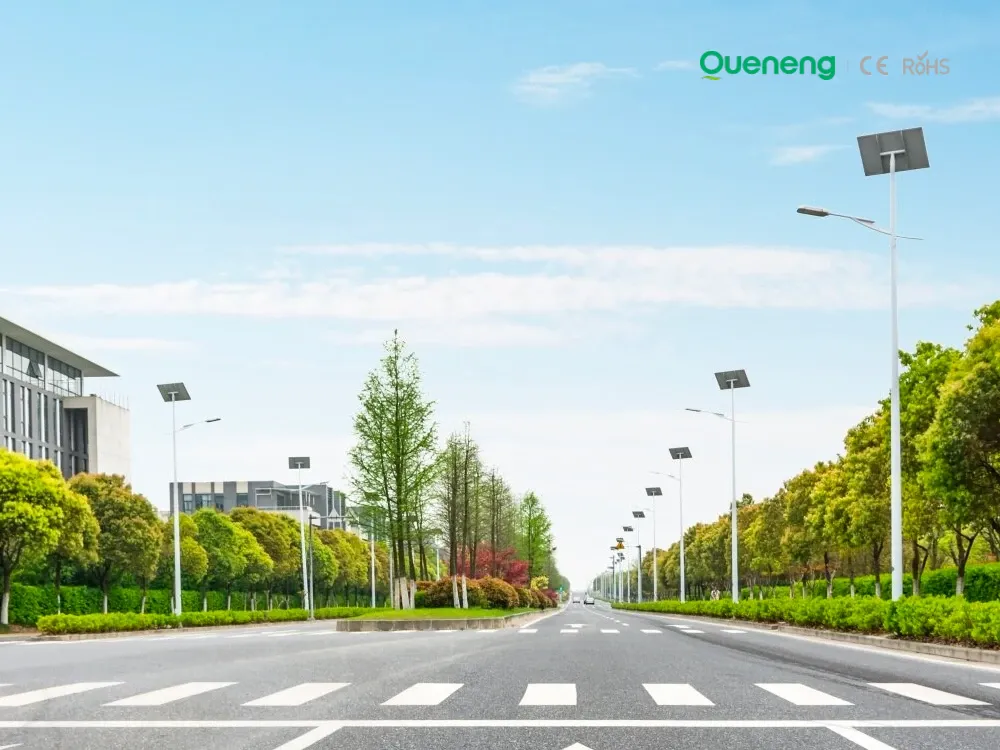
In recent years, the purchase of solar streetlights for municipalities has become a growing trend across the globe. Local governments are under pressure to reduce public expenditure, promote green energy, and create safer communities. Solar streetlights provide a reliable, cost-effective, and sustainable solution that meets these needs. Queneng Lighting, as a leading solar street lighting manufacturer, has supported multiple municipal projects worldwide with customized and energy-efficient solutions.
FAQ
Solar Street Light Luxian
How do Luxian solar street lights contribute to reducing carbon emissions?
By using solar power as their energy source, Luxian solar street lights reduce reliance on fossil fuels for electricity generation. This contributes to lower carbon emissions, helping mitigate climate change and promoting environmental sustainability. Their energy efficiency further reduces the overall carbon footprint of lighting systems.
Commercial and Industrial Parks
Are the lights customizable for different industrial park layouts?
Yes, we provide customized solutions tailored to the specific lighting requirements and layouts of your park.
Battery Types and Applications
What types of rechargeable batteries are there? Which devices are they suitable for?
Features: High capacity, environmentally friendly (no mercury, lead, cadmium), overcharge protection
Application equipment: audio equipment, video recorders, mobile phones, cordless phones, emergency lights, notebook computers
Ni-MH prismatic battery
Features: High capacity, environmentally friendly, overcharge protection
Application equipment: audio equipment, video recorders, mobile phones, cordless phones, emergency lights, notebook computers
NiMH button battery
Features: High capacity, environmentally friendly, overcharge protection
Application equipment: mobile phones, cordless phones
Nickel cadmium round battery
Features: High load capacity
Application equipment: audio equipment, power tools
Nickel cadmium button battery
Features: High load capacity
Application equipment: Cordless phones, memory
Lithium Ion Battery
Features: High load capacity, high energy density
Application equipment: mobile phones, laptops, video recorders
Lead-acid batteries
Features: Cheap, easy to process, short life, heavy weight
Application equipment: ships, automobiles, miner's lamps, etc.
Battery fundamentals and basic terms
What is battery internal resistance?
Solar Street Light Lufeng
What type of LED technology does Lufeng solar street lights use?
Lufeng solar street lights use advanced LED technology, which provides bright, high-quality illumination while consuming less power compared to traditional street lights. LEDs are more energy-efficient, have a longer lifespan, and require less maintenance, making them ideal for outdoor lighting applications.
Sustainability
Can Queneng solar street lights operate in all weather conditions?
Yes, our solar street lights are equipped with high-efficiency photovoltaic panels and intelligent control systems, enabling them to operate even in cloudy or low-light conditions. The battery can store enough energy to provide lighting for several days during extended periods of cloudy weather.

Queneng's Luxian Reliable Solar Street Light offers energy-saving LED lighting for outdoor use. This durable, solar-powered street light provides reliable illumination, reducing energy costs and environmental impact. A perfect solution for sustainable outdoor lighting.
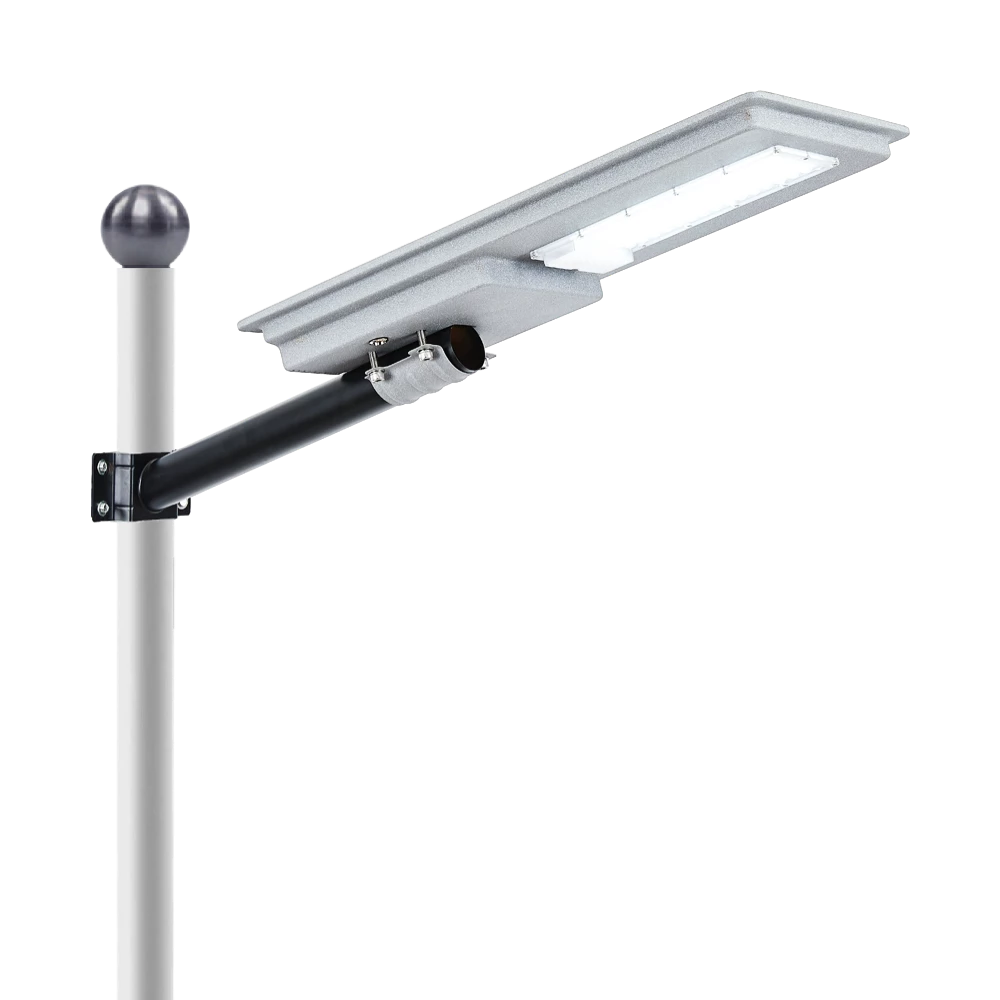
Introducing the Luda Solar Street Light by Queneng: the ultimate in outdoor lighting. This durable, eco-friendly solar street light offers high efficiency and sustainability. Perfect for illuminating streets, pathways and public spaces, it harnesses solar power to reduce energy costs and environmental impact.
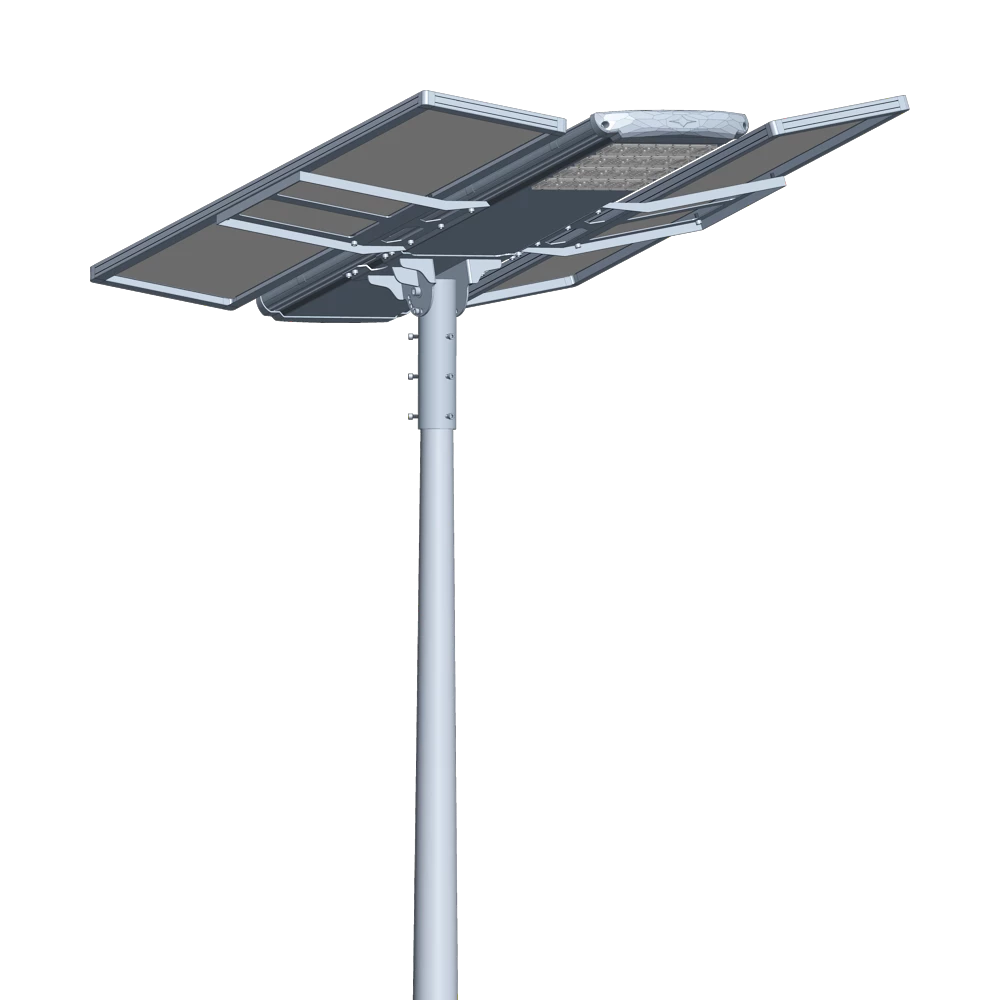
Introducing the Luqing Solar Street Light by Queneng, Efficient LED lighting powered by solar energy is perfect for illuminating outdoor areas. Harness the power of solar energy for sustainable, reliable street lighting. Ideal for eco-friendly, cost-effective outdoor illumination solutions.
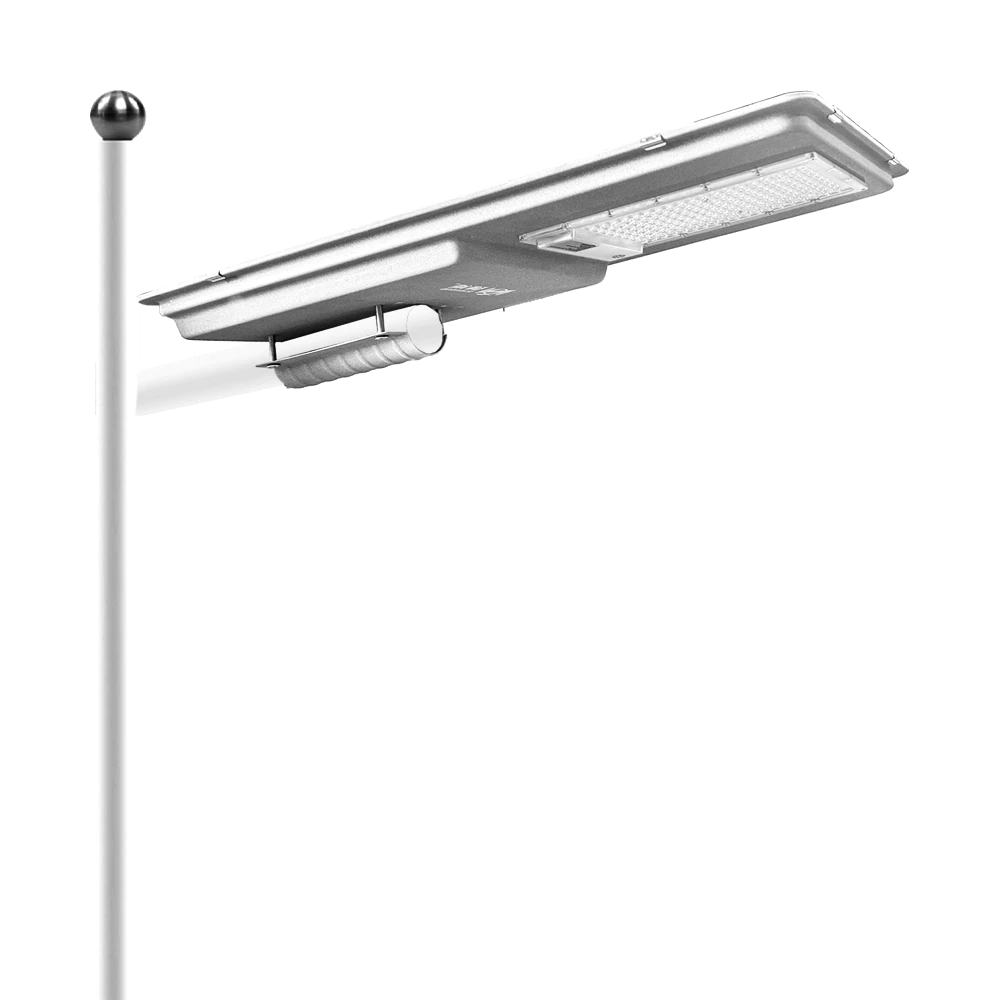
Queneng's Lufa high-efficiency solar LED street lights illuminate urban and commercial spaces brilliantly. These commercial solar LED street lights offer superior energy savings and reliable performance, making them an ideal sustainable lighting solution.
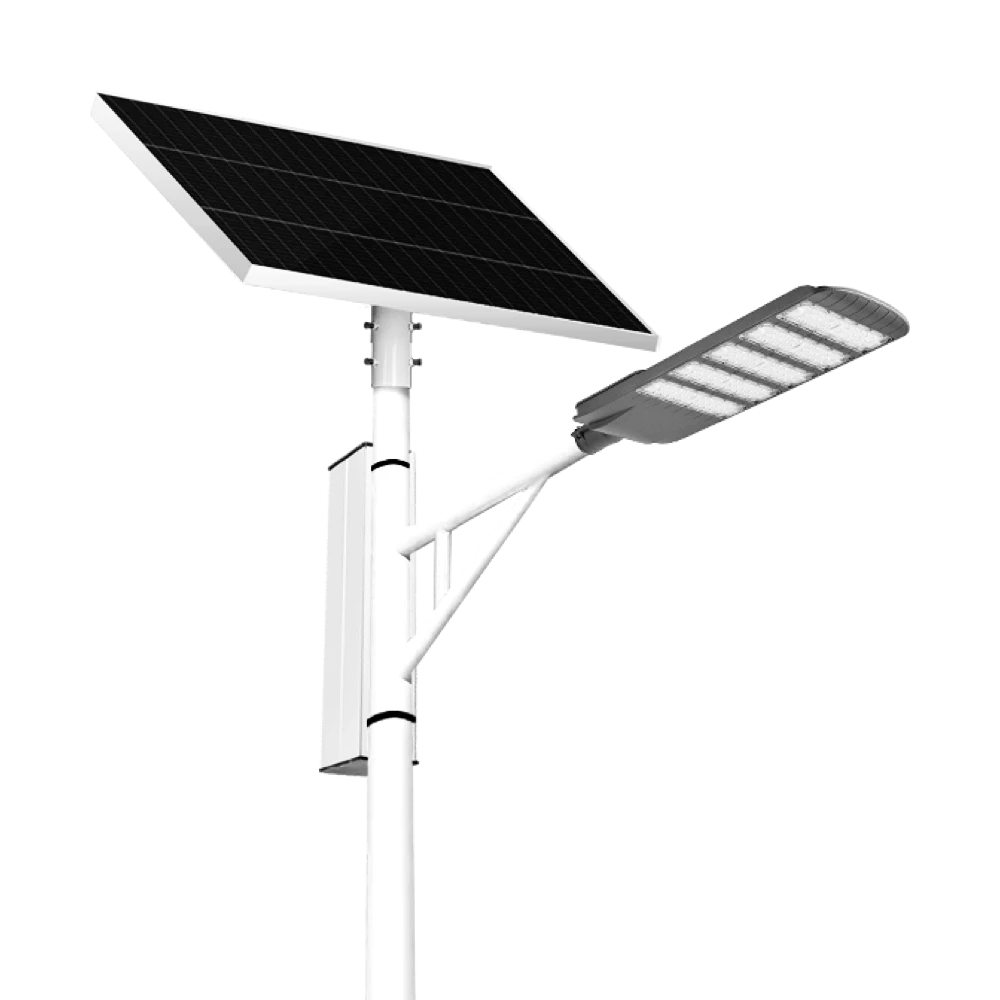
The Solar Streetlights of Luhao for Municipalities are designed to deliver reliable, energy-efficient, and cost-effective public lighting solutions. Equipped with advanced LED technology, durable lithium batteries, and high-efficiency solar panels, these streetlights provide consistent illumination for roads, parks, residential areas, and government projects.
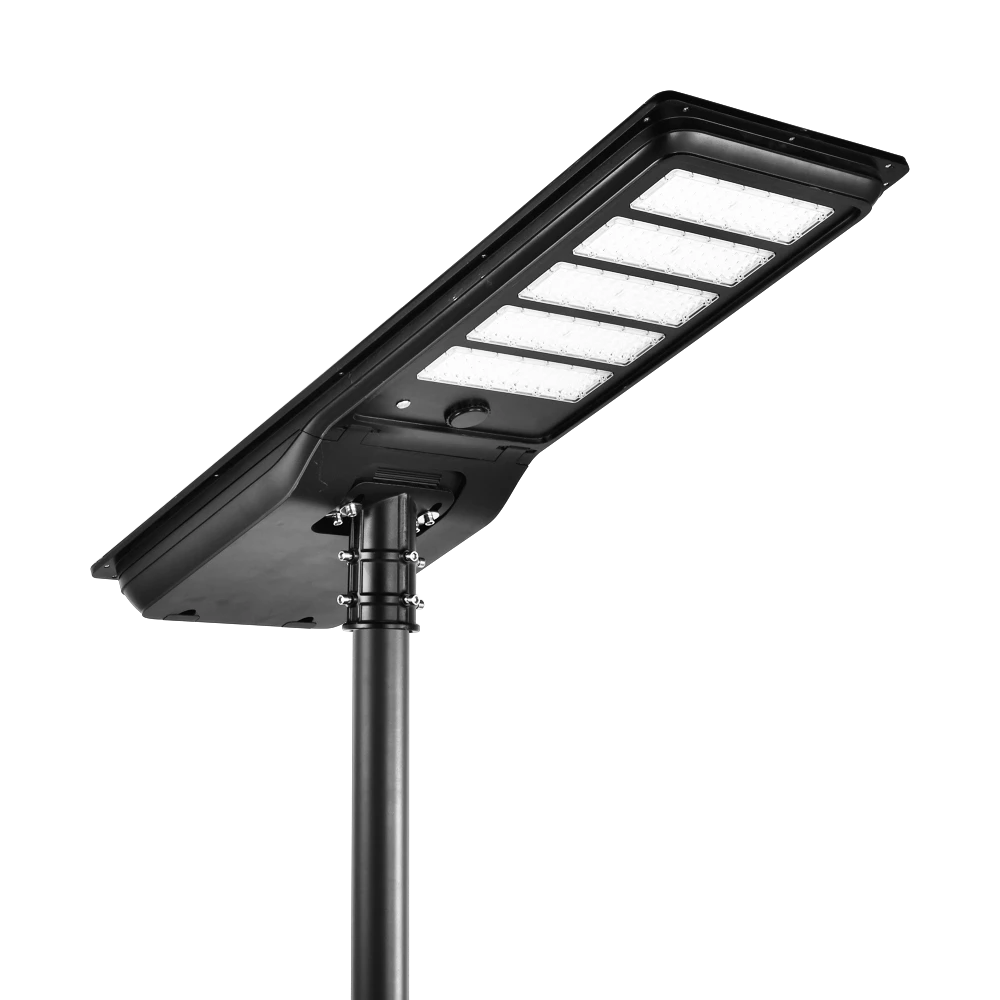
High-efficiency all-in-one solar street light with a monocrystalline solar panel and LiFePO₄ battery. Delivers brighter illumination, wider outdoor coverage, and safer lighting performance for streets and public areas.
If you would like more information about Queneng solar lighting solutions, please send us a message by filling out the form below. Our professional team will get back to you within 24 hours!
Rest assured that your privacy is important to us, and all information provided will be handled with the utmost confidentiality.
Schedule a Meeting

Book a date and time that is convenient for you and conduct the session in advance.
Have more questions about our products or services?

